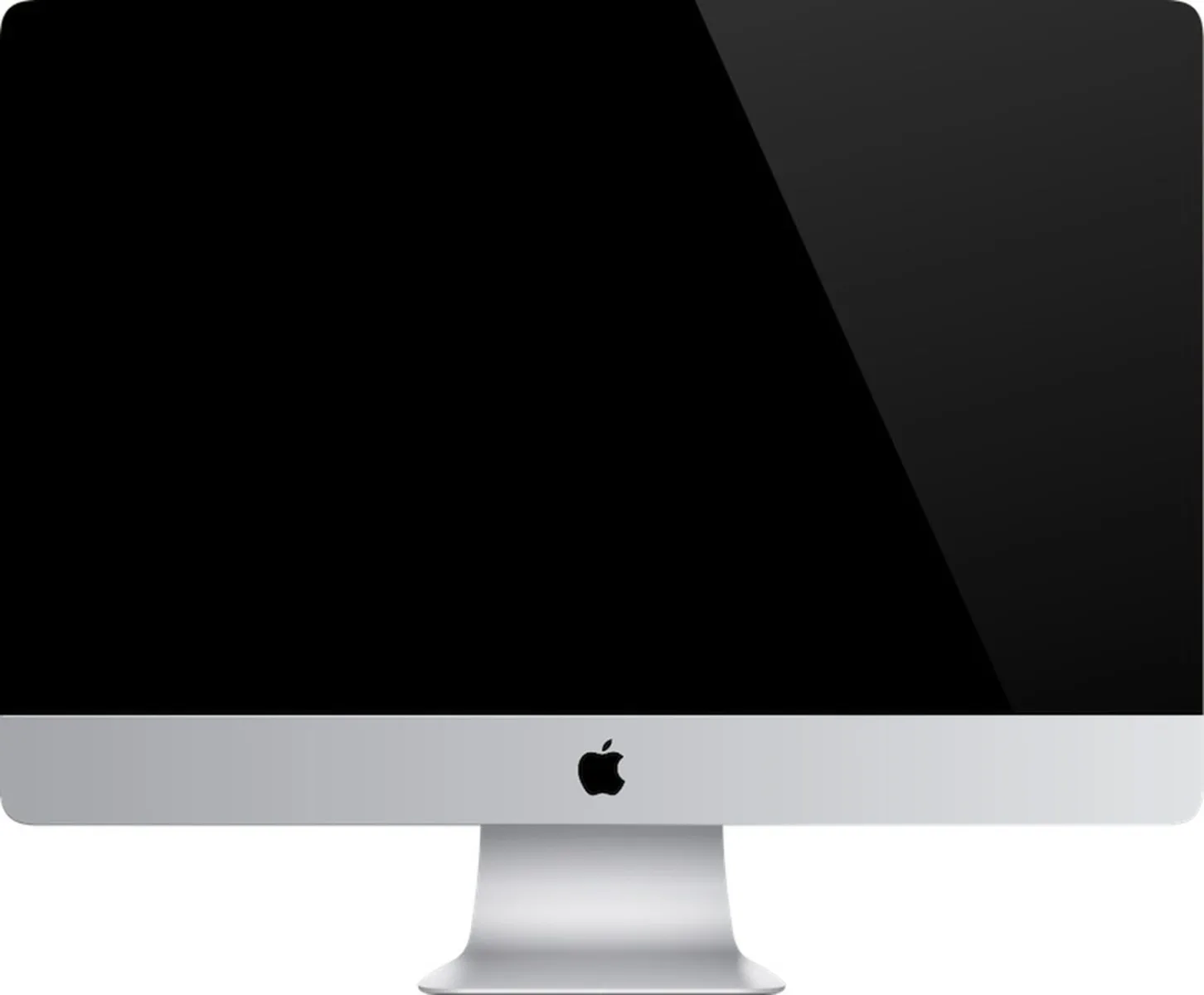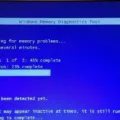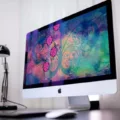Are you facing the infamous iMac startup black screen of death? If so, you’re not alone. Many Mac users have experienced this frustrating issue at least once in their lives. Unfortunately, the causes of a black screen on startup can vary greatly and can be hard to pinpoint without further investigation.
Fortunately, there are several DIY methods you can use to try and fix the black screen issue on your iMac. Here’s a step-by-step guide to help you get your Mac back up and running:
1. Check Your Power Adapter, Cable, & Battery – Make sure all three components are connected properly and functioning as they should.
2. Detach Your Peripheral Devices – Unplug any external devices such as keyboards, mice, speakers, or USB drives from your Mac and try restarting it again.
3. Check Display Settings on your Mac – Go to System Preferences > Displays and make sure that the brightness is set correctly and that the right resolution is selected for your display.
4. Force Shut Down or Restart Your Mac – If restarting doesn’t work, press and hold down the power button until your Mac turns off completely (this may take up to 10 seconds). Then turn it back on again.
5. Power Cycle Your Mac – This involves disconnecting your iMac from its power source for a few minutes before connecting it back up again and rebooting it once more. It may reset any settings that could be causing issues with the display settings on startup.
6. Repair Startup Disk With Disk Utility – Go to Applications > Utilities > Disk Utility > Select “Macintosh HD” from the sidebar > Click “First Aid” tab at the top > Click “Run” to repair any disk errors detected by Disk Utility (Note: this process may take some time).
7. Reset The System Management Controller (SMC) & NVRAM/PRAM – Resetting these two components can help resolve many hardware issues with your iMac including black screens during startup:
* To reset SMC: shut down your Mac > unplug all cables from it including the power cable > press & hold Shift + Control + Option keys while pressing down the power button for at least 5 seconds > release all keys then reconnect the power cable & turn on your iMac
* To reset NVRAM/PRAM: shut down your Mac > press & hold Command + Option + P + R keys together for about 20 seconds until you hear a second start-up chime then release all keys & turn on your iMac
8. Make Sure Your iMac Is Well Ventilated – Dust build-up can cause overheating which in turn can lead to hardware issues like a black screen during startup if not regularly taken care of using a compressed air duster or by simply wiping away dust with a soft cloth or brush attachment when cleaning vents regularly (at least once every 2 months).
Hopefully one of these methods has helped you fix the dreaded iMac startup black screen issue! But if none of them do the trick then you may need professional help from an Apple technician who will be able to diagnose what is causing this problem with greater accuracy and provide an appropriate solution tailored to suit your needs best!

The screen Remains Black After Turning On IMAC
It is possible that your iMac has gone to sleep due to inactivity. To save energy, your Mac and display go to sleep automatically when they are not in use. To wake up your iMac, press any key on the keyboard or click the mouse or trackpad button. If the display remains black, it is possible that there may be a problem with your display or graphics card. You can try restarting your iMac by pressing and holding down the power button for a few seconds until it powers off and then pressing the power button again to turn it back on. If this does not work, you may need to have a technician take a look at it.
Fixing the Black Screen of Death on an iMac
The black screen of death can be a tricky problem to fix on an iMac, but there are a few steps you can take to troubleshoot it. First, check your power adapter and cable for any damage or lose connections. If the power adapter seems fine, check if the battery is working properly. Then, detach all peripheral devices such as external hard drives or monitors that may be connected to your iMac. Next, check the display settings on your Mac by going into System Preferences > Displays and making sure the resolution is set correctly. If nothing has worked so far, try forcing a shutdown or restart by pressing and holding down the power button until the machine shuts off. You can also try powering off and then powering back on, or resetting the System Management Controller (SMC). Finally, you may need to reset NVRAM/PRAM on your Mac by pressing Option + Command + P + R keys at once while booting up your iMac. If you’re still having trouble with a black screen of death after trying these steps, it’s best to take your iMac in for professional repair.
Troubleshooting a Mac Stuck on a Black Screen with Apple Logo
There are several possible reasons why your Mac is stuck on a black screen with the Apple logo. It could be due to a software issue, such as a corrupted operating system, or it could be caused by hardware problems such as a failing hard drive or another component failure. It is also possible that you have recently made changes to your system, such as changing your boot drive or installing new software, and this has caused the issue. If you have not recently made any changes to your system, it may be worth trying a forced restart by pressing and holding the power button on your Mac for up to 10 seconds until it turns off. After that, try turning your Mac back on. If this doesn’t work, you may need to contact Apple Support for further assistance.
The Impact of Black Screen of Death on Hardware
The Black Screen of Death can sometimes be caused by a software glitch (or Windows Update) but it can also be caused by a hardware issue. In some cases, the black screen may occur seemingly at random and could be caused by a more serious hardware problem. Such problems may require component repair or replacement in order to resolve the issue.
Troubleshooting a Mac That Has Suddenly Gone Black and Will Not Turn On
This could be caused by a range of issues, so it’s difficult to pinpoint the exact cause without further information. It may be as simple as a setting issue or as complicated as hardware failure. Common causes include:
1) Corrupted display driver: If you’ve recently installed any new software or updated your operating system, this could lead to a corrupted display driver, which can cause your Mac to go black and not turn back on.
2) Overheating: Heat can damage components in your Mac, leading to a black screen when it fails to boot up. Make sure that you keep your Mac cool by using cooling stands and keeping it away from direct sunlight or other sources of heat.
3) Faulty hardware: If you’ve recently added any external hardware components, such as an additional hard drive or memory card, this can cause compatibility issues with your Mac that lead to a black screen. Try removing the components and see if the issue persists.
4) Third-party apps: Some third-party apps can hijack the settings on your Mac and cause it to go black. Try uninstalling any recently installed apps and rebooting your Mac to see if this resolves the issue.
If none of these solutions work, you may need to take your Mac to an Apple Store or authorized service center for further diagnosis and repair.
Reviving a Black Screen
If your computer is experiencing a black screen, there are several steps you can take to try to revive it. First, make sure the monitor is securely connected to the computer and that all cables are plugged in properly. If this does not fix the problem, try pressing and holding the Windows key on your keyboard (the key with the four colorful squares) and pressing R simultaneously. This should bring up a ‘Run’ window where you can type ‘CMD’. Press Enter and then type ‘sfc /scannow’ into the command prompt. This will check for any system file corruption that could be causing the black screen issue and attempt to repair it. If this does not work, you may need to try rolling back or reinstalling your display driver/adapter by entering Safe Mode, which you can do by pressing F8 while restarting your computer. You may also need to prompt a System Restore by restarting your PC in Automatic Repair mode (by holding down Shift + Restart). Lastly, if all else fails, you can try restarting Windows Explorer from Task Manager (Ctrl + Alt + Del), which may help refresh the screen.
Troubleshooting a Black Computer Screen
There are a few possible explanations for why your computer screen went black.
1. Connection problems with your monitor or screen: Ensure that the monitor or screen is properly connected to the display adapter port and that all cables are securely connected. Check to see if the power cord is plugged in, and if necessary, reboot your computer.
2. Display adapter driver update issues: If you recently updated your display adapter drivers, it may be causing conflicts which will result in a black screen. Uninstall any recent updates and restart your computer to see if this solves the problem.
3. Issues with recent system updates or installations: If you recently installed new software or made changes to system settings, it could be causing the black screen. Try restoring the system to a previous point before the changes were made and see if that fixes it.
If none of these solutions work, then it may be an issue with your hardware itself – particularly the display adapter or graphics card – which would require professional assistance from a technician.
Conclusion
In conclusion, a black screen on startup is a common issue with iMacs. It can be caused by a variety of things, including faulty hardware, a corrupt operating system, or other software issues. To fix the issue, you should first check your monitor cables and display settings. You should then restart your Mac and reset your SMC and NVRAM. If these methods don’t work, you may need to unplug external devices or repair the startup disk with Disk Utility. Finally, make sure that your Mac is well-ventilated and consider replacing any faulty hardware components.








